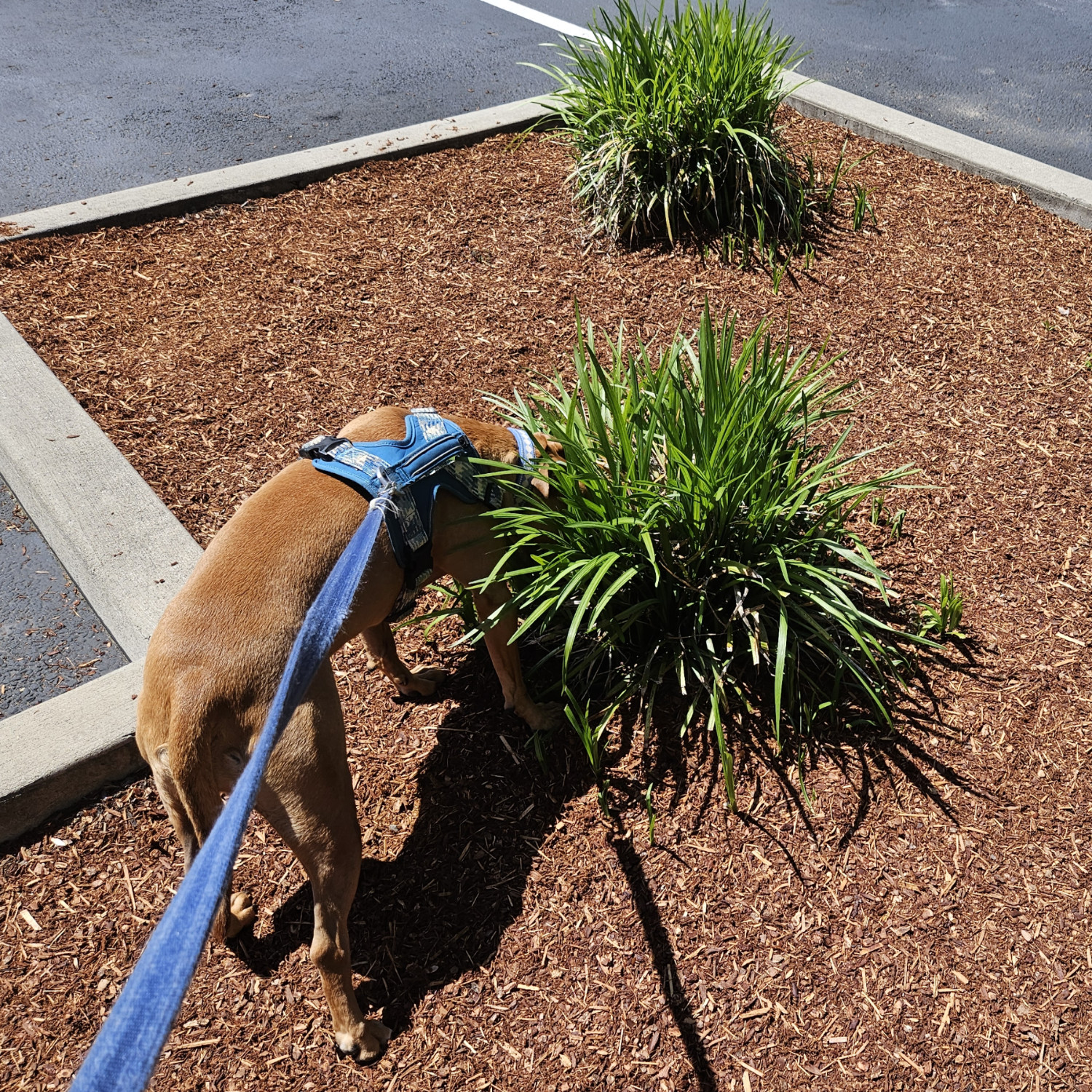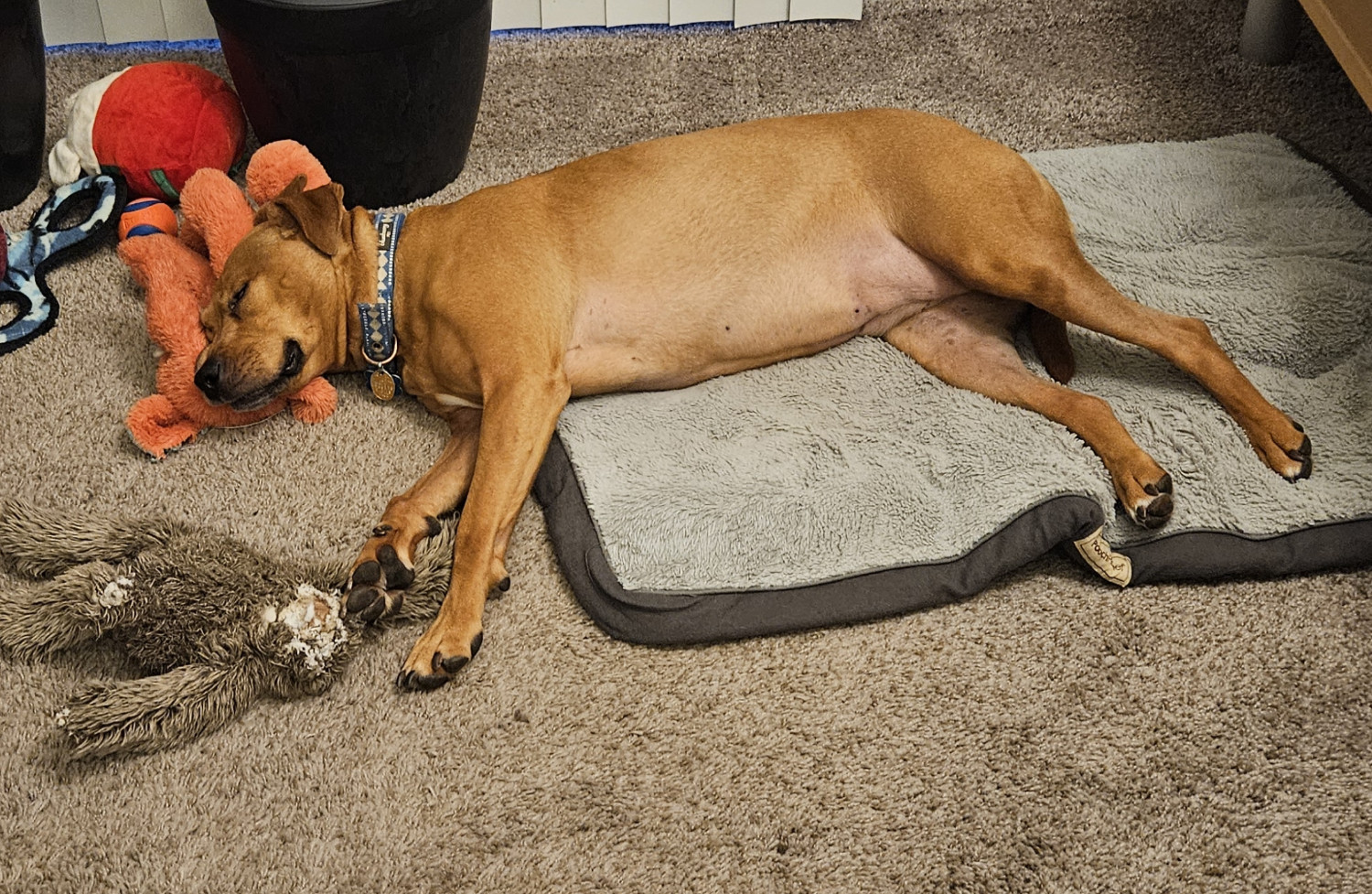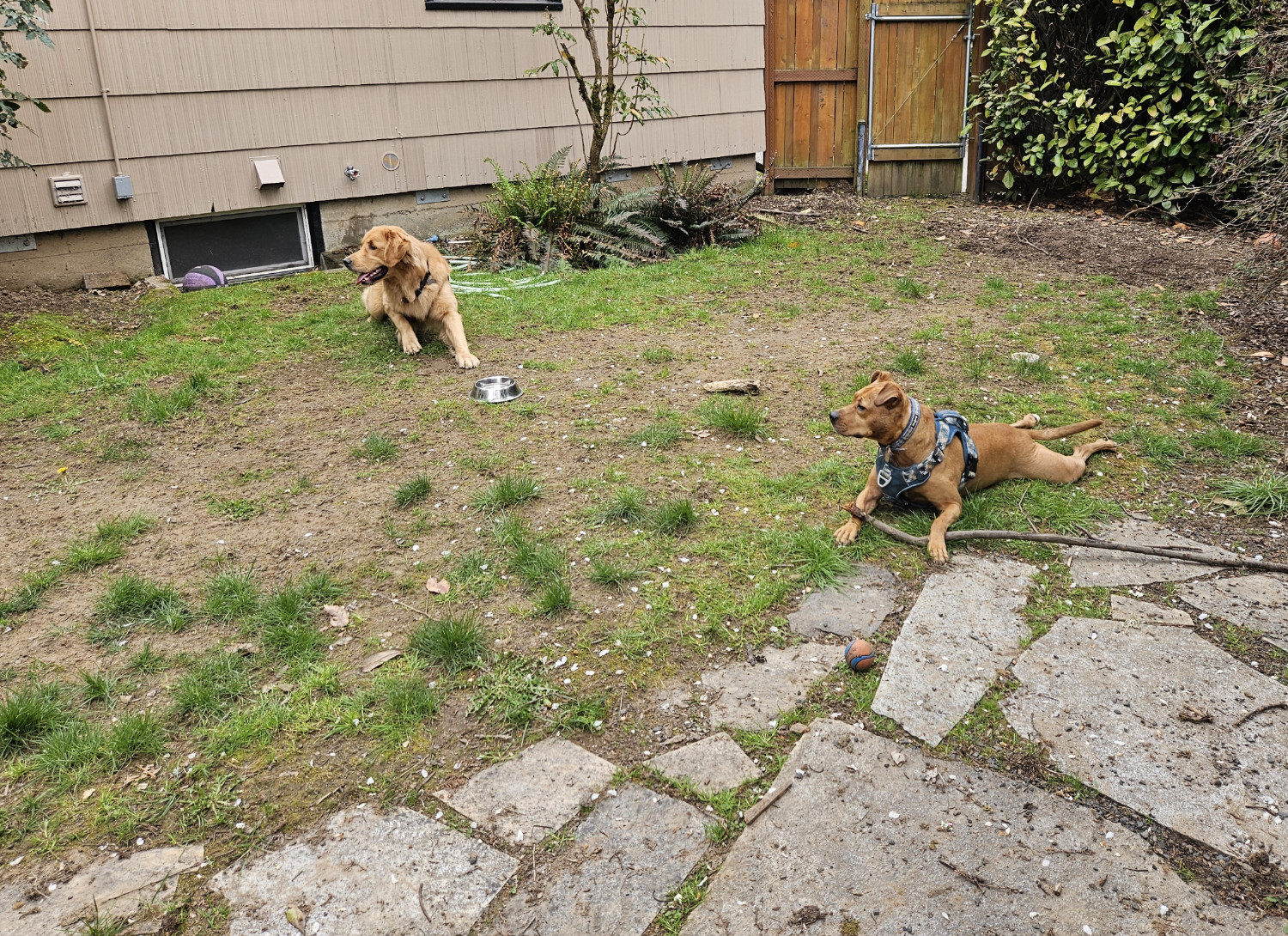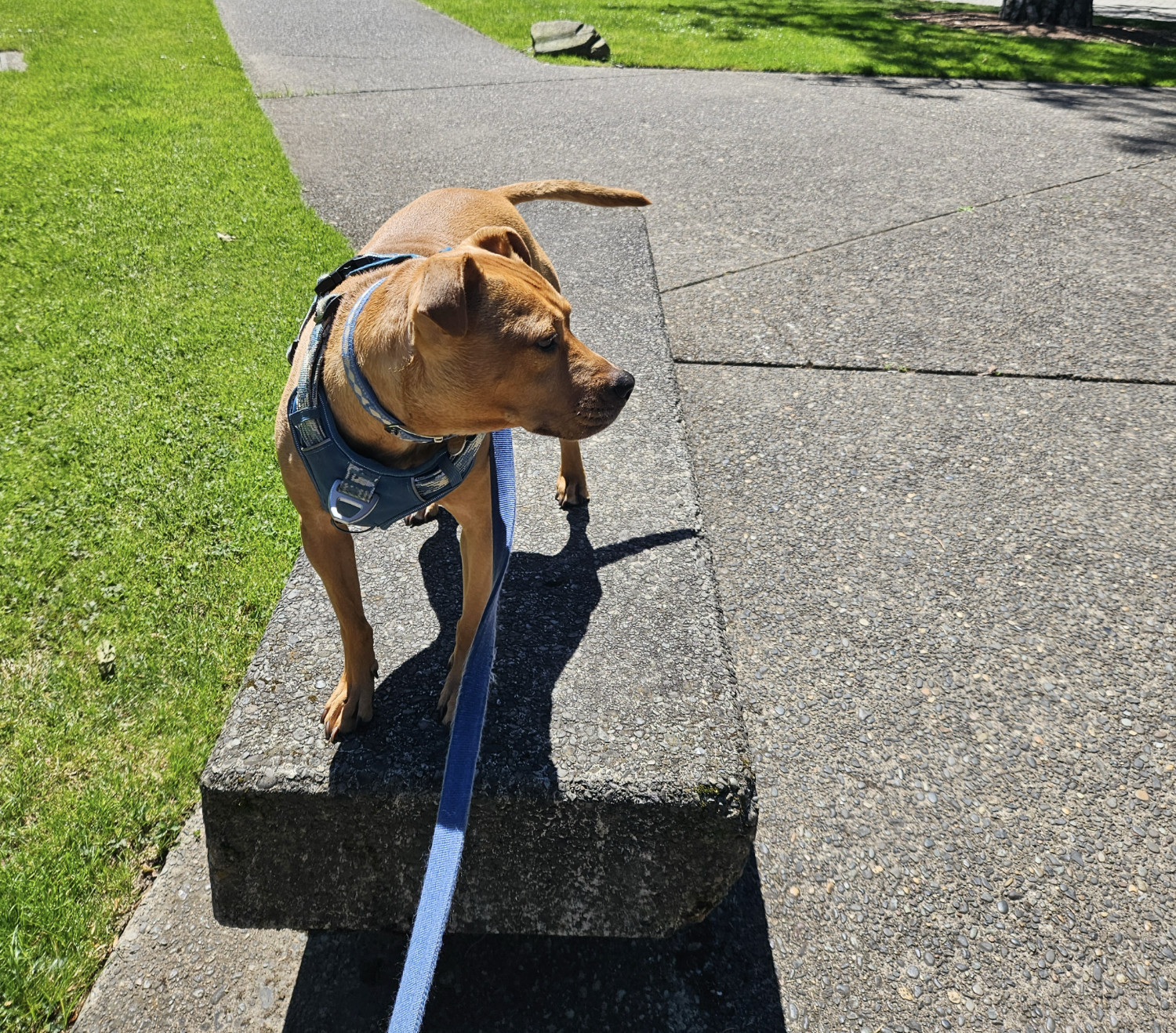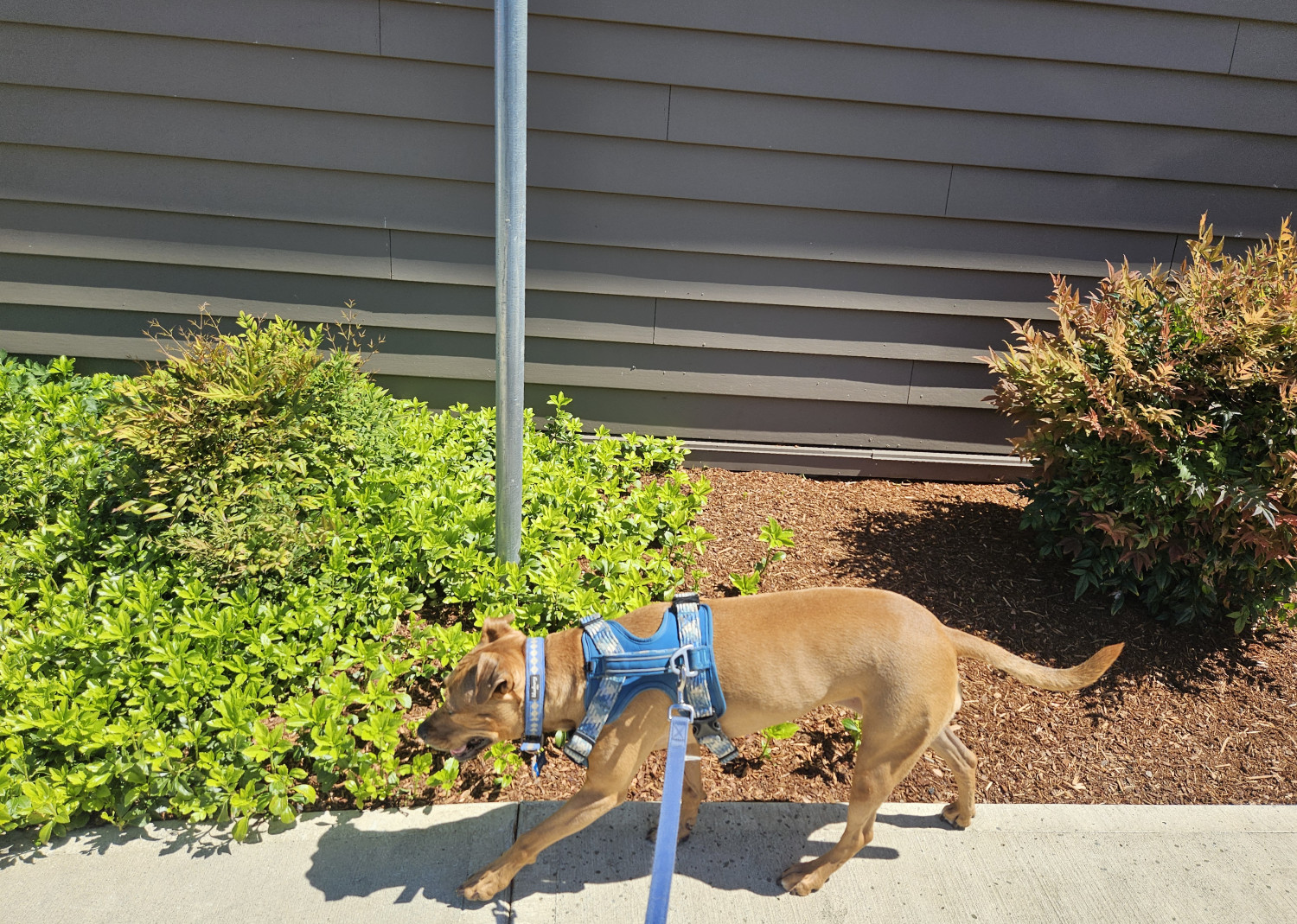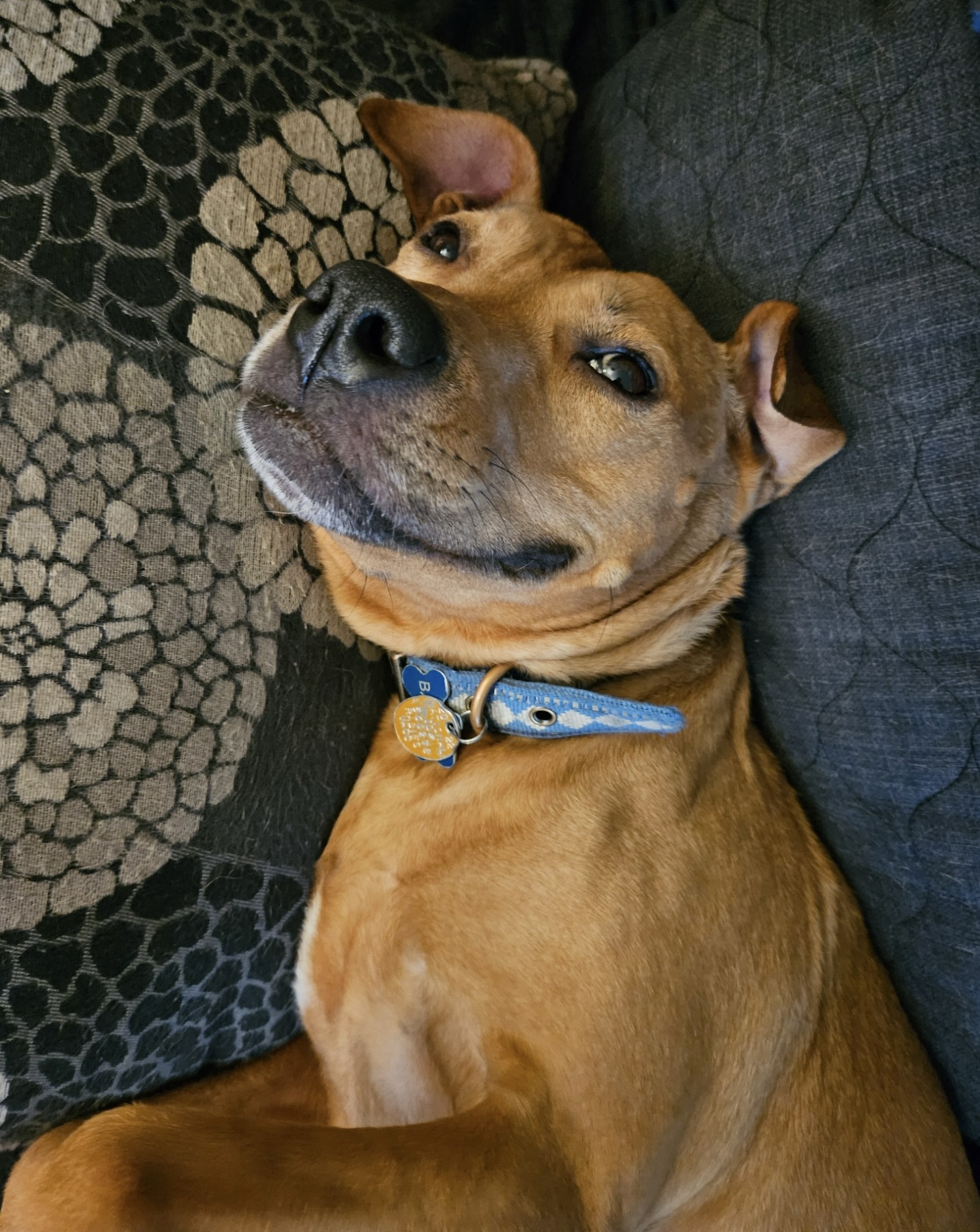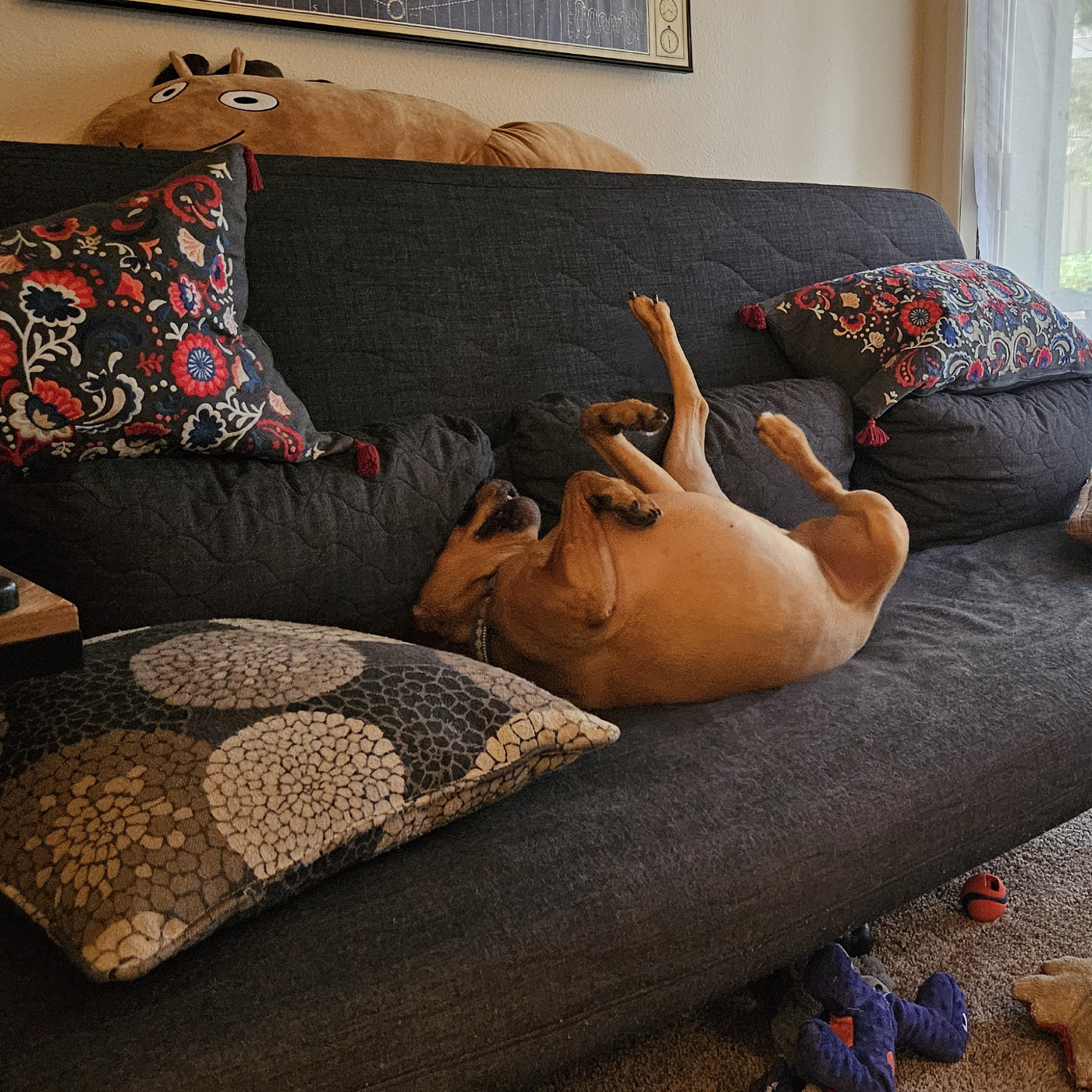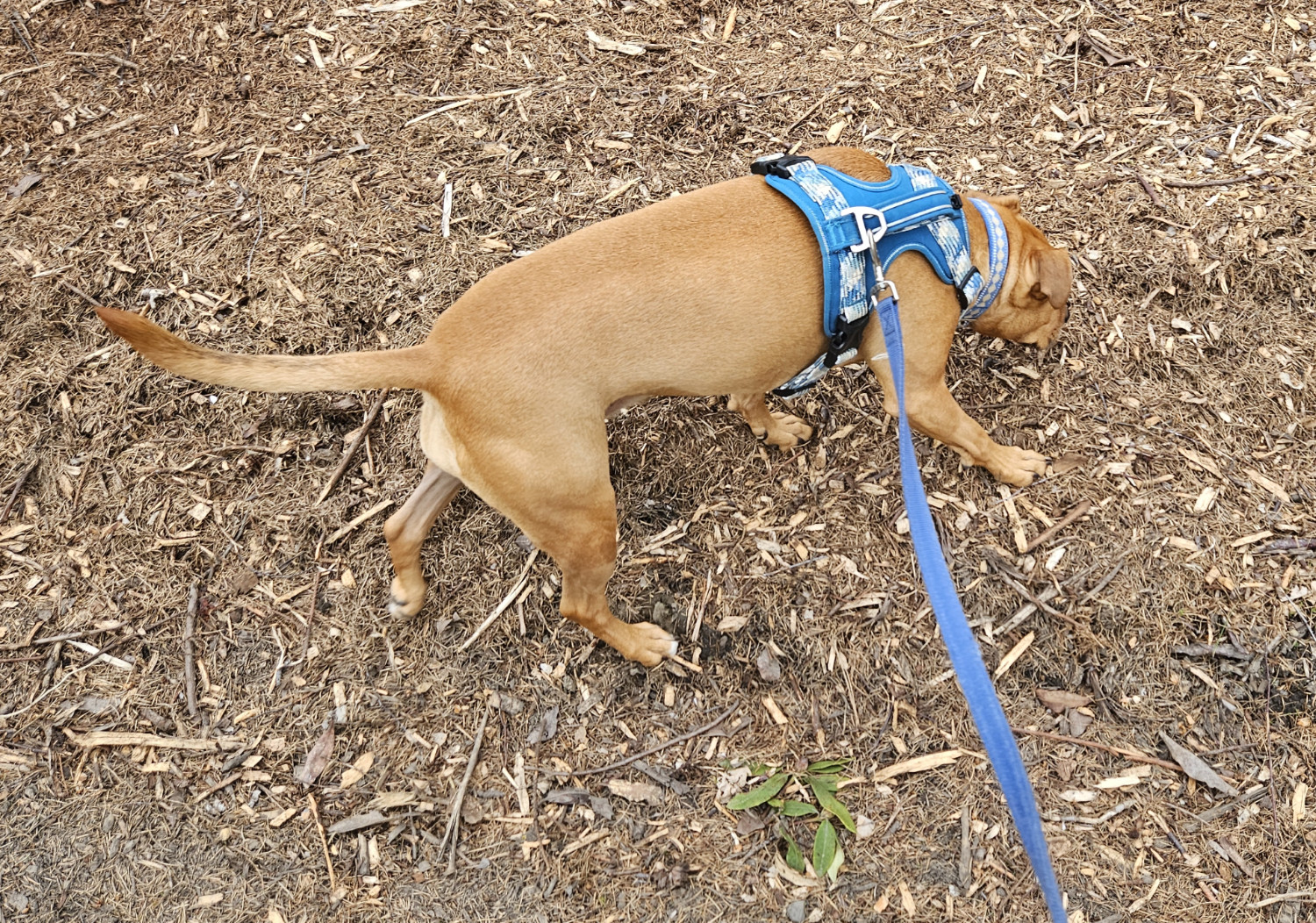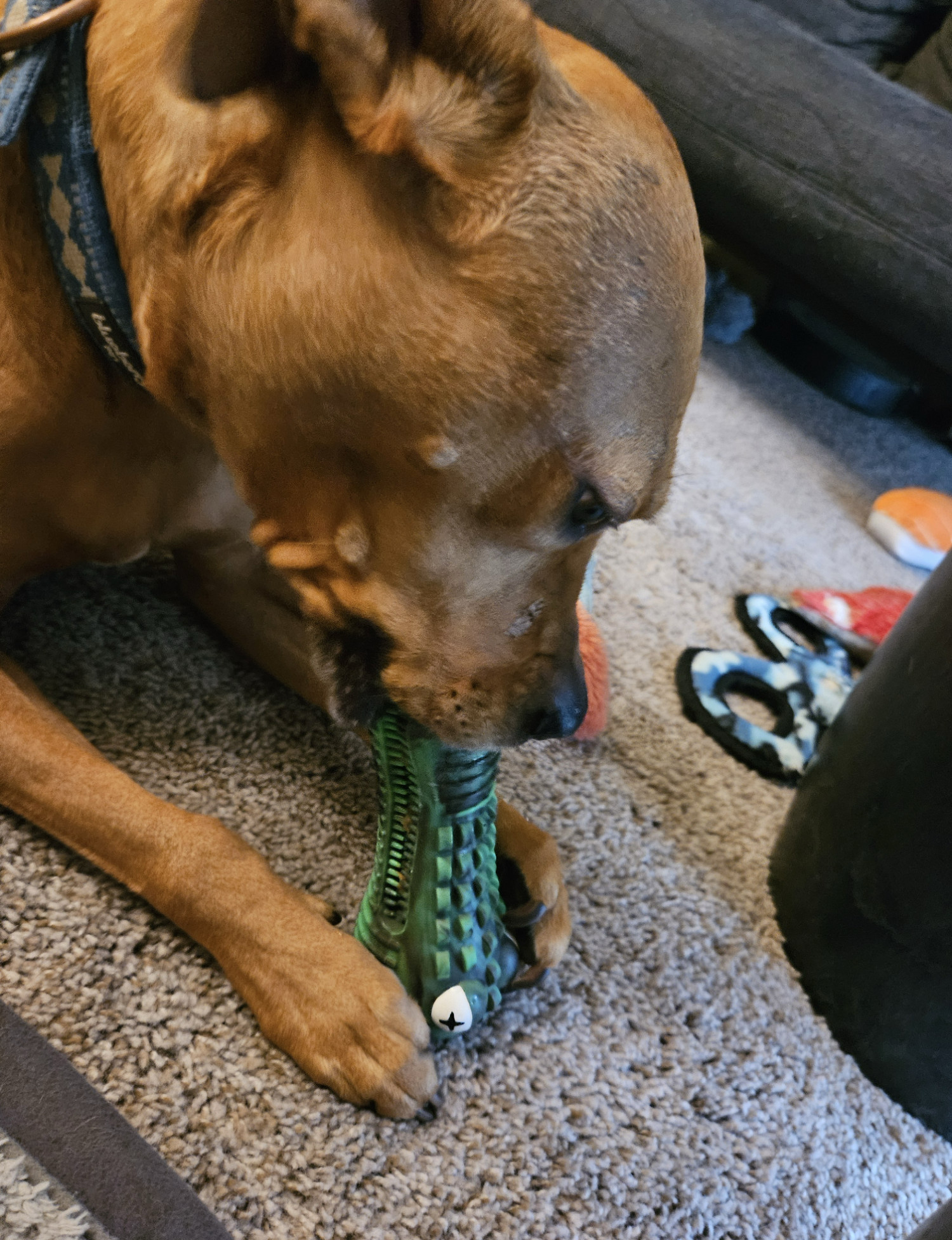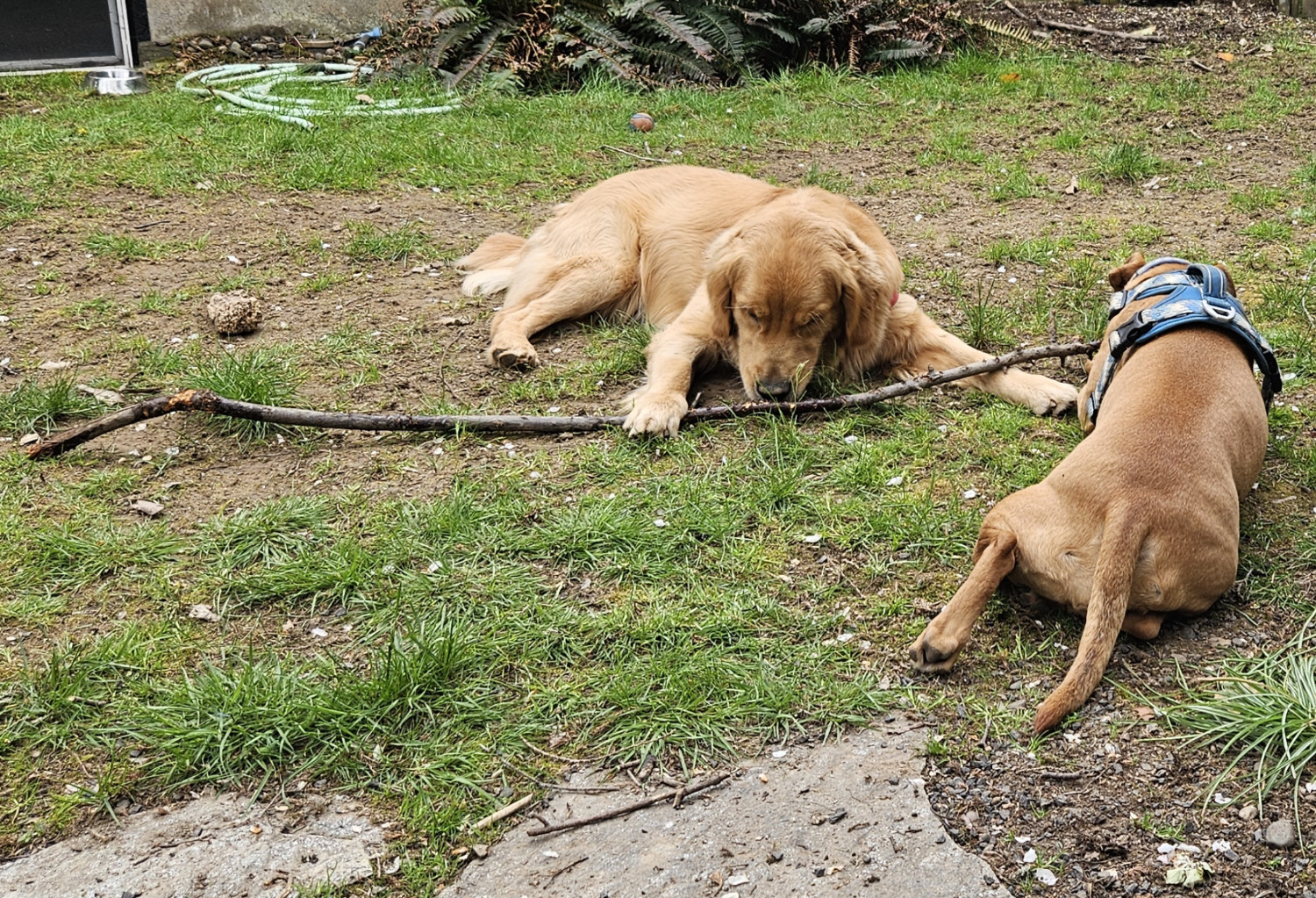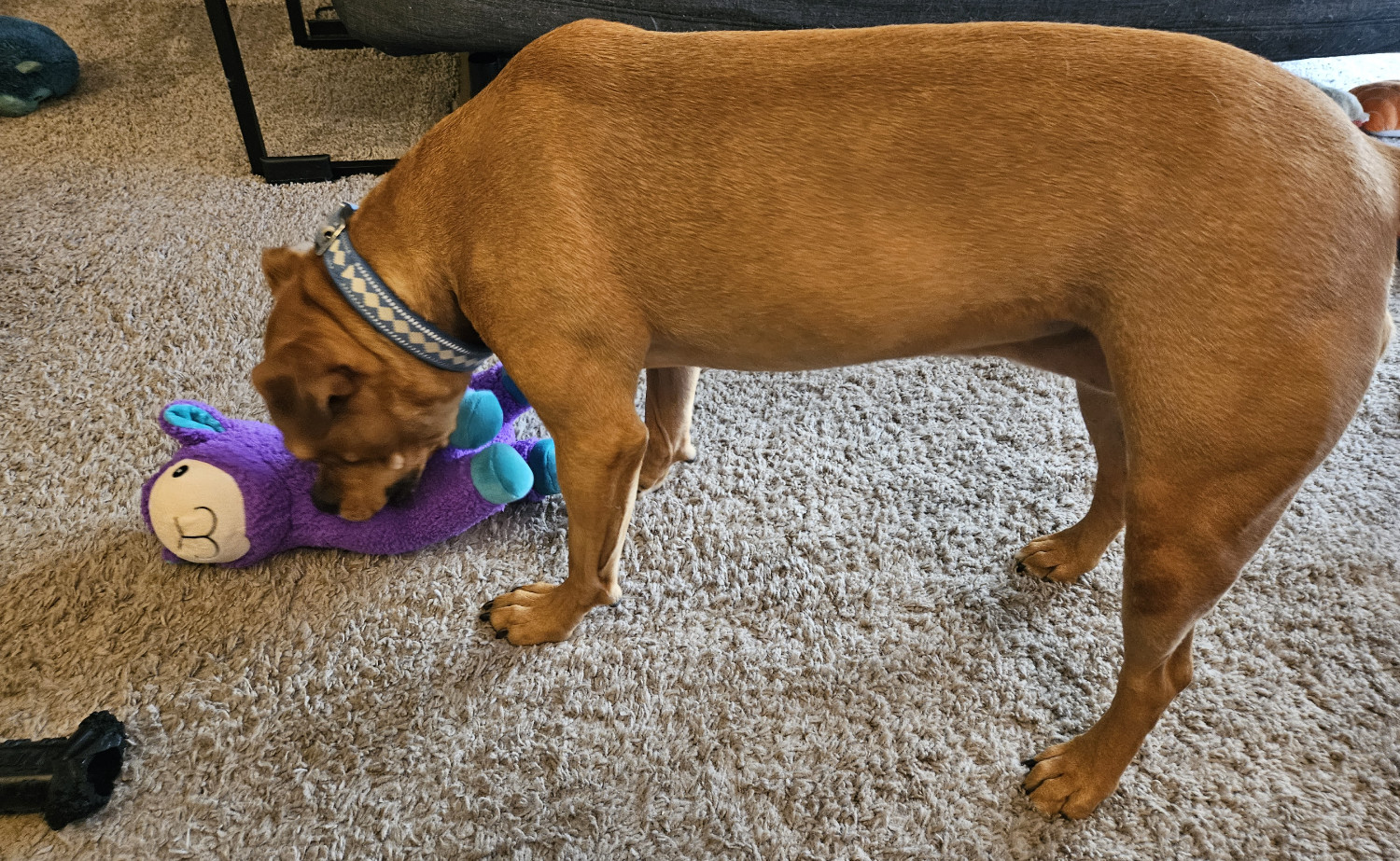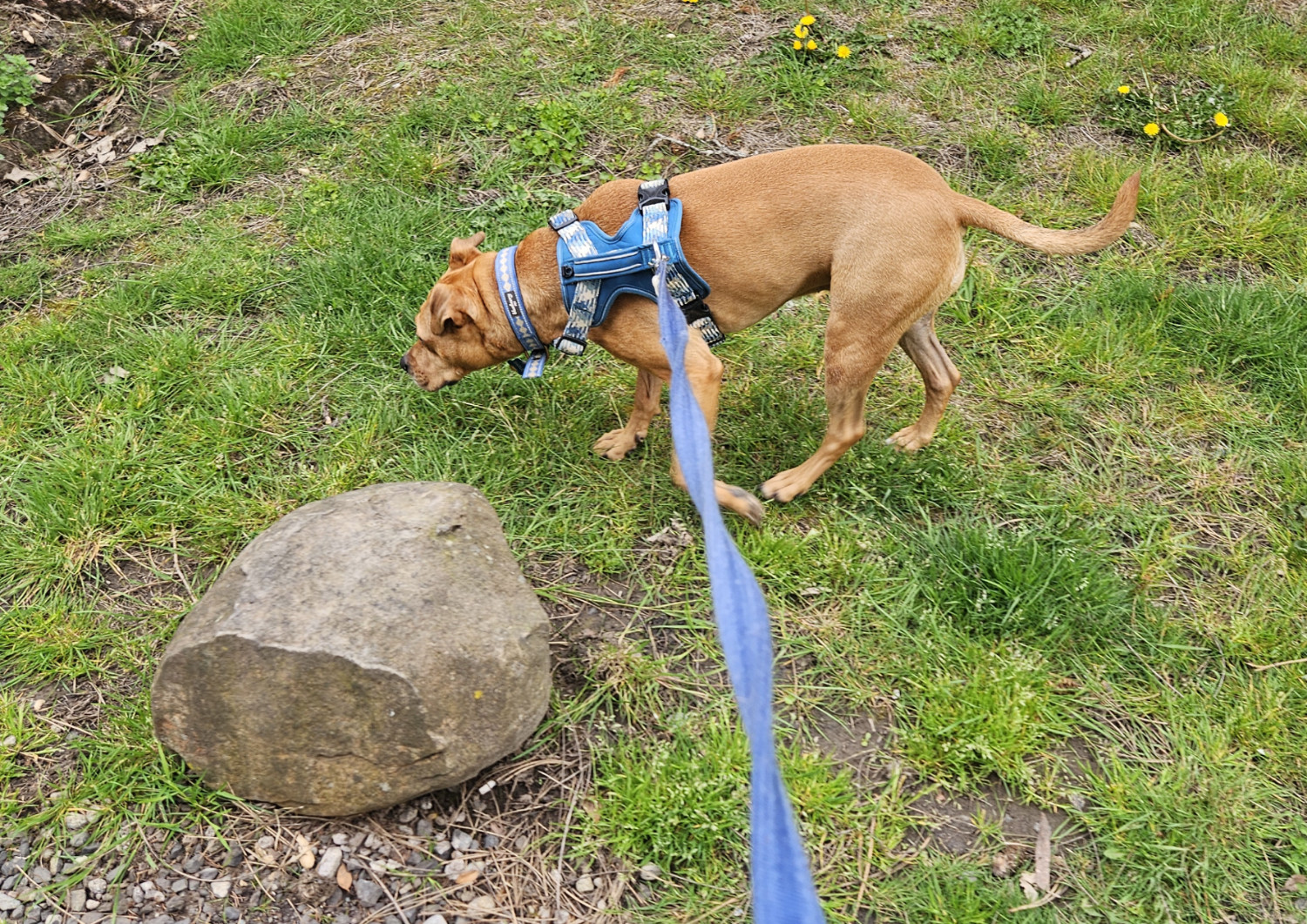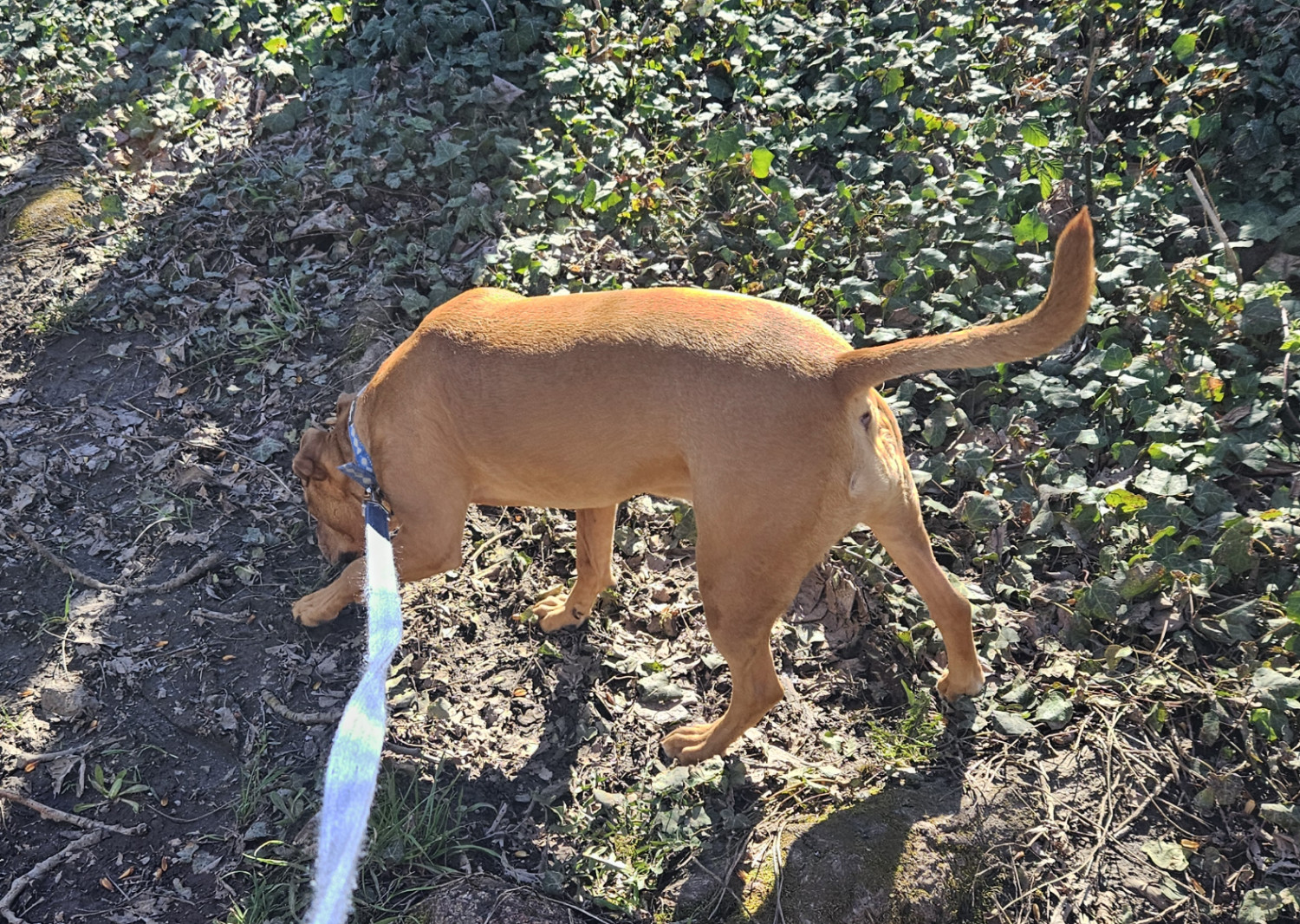Barley, a dog, drinks from the same water dish as her golden retriever buddy. Barley, a dog, chews on one end of a very long fallen branch while her golden retriever buddy nibbles at a middle part of the branch. As best I can tell, Barley does not have a truly individualized sense of self. She is always, unavoidably, a member of the present group, and evaluates what she is doing in those terms. Her inner world does not appear to break along the lines of “What do I want?” but rather “What do we want?” A consequence of this is that most of her favorite verbs (such as “eat” and “play”) are very communal. If another dog has a toy, she is very interested in getting that toy, but more fundamentally needs a toy so she can do what the other dog is doing. As a corollary, her interest in playing with toys is largely driven by her impression that the toy is desirable to others. So far as I can tell, she does not play with toys at all when by herself, and plays with them much more excitedly when more people are around, as if to show off that she is playing. This led to some fun call-and-response with her golden retriever buddy, who is much more in his own head and doing what he wants to do. “Oh, you’re drinking water?” Barley seemed to think. “I’ll have you know that I’m the boss, so if anyone’s going to drink water around here, it’s me.” Then, “You’ve got a branch to chew on? I’m glad I thought of that, it’s my decision that we’re chewing on this branch right now.” All of this unfolded with no sign of frustration on her part. Despite her being bossy and her buddy generally submitting to her bossiness, it was her buddy who mostly dictated what the two of them were doing moment to moment.
Read more →
